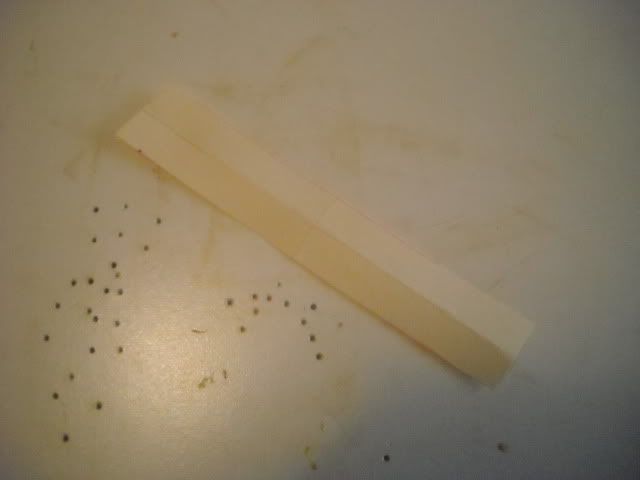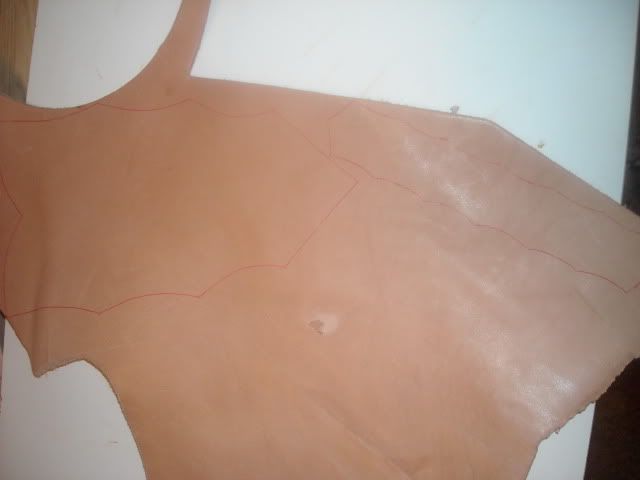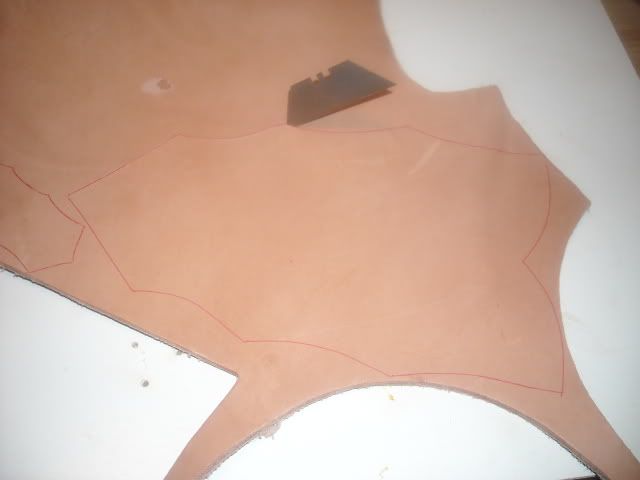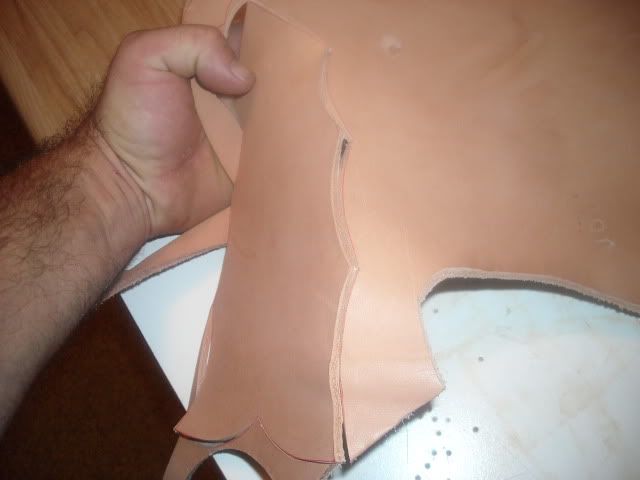Now for the belt loop. Cut out a rectangle from some scrap paper, grab a pen and go to work. I will show you later why a little more planning is needed if there is going to be any tooling involved.

If the loop was going to be plain, this design will work. For tooling, there is a little more calculating involved and I already had a headache.

Now to get started. I am using some 8 ounce veggie tanned leather for this. Check the hide side of the leather for any cuts, scratches, or blemishes. These will show in the final piece. Lay the patterns on the leather and trace around them. You can use a regular pen, pencil, scratch awl, but I would stay away from the permanent markers and gel pens. They tend to bleed and unless you are dying the leather black, the ink will show. Now would also be a good time to go wash your hands. The leather will pick up any oils or dirt on them. I usually end up washing mine about ten times during one sheaths because of handling tools and stuff.

To cut the leather, I use a razor blade. Scissors will work on thinner leather, and eventually work on this, but you will have some cramped and blistered hands when you are done. Here is a ghost holding the blade for me while I take a picture.

One pass with the razor blade almost cut all the way through and not alot of pressure was needed.
